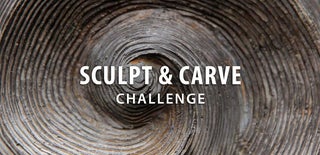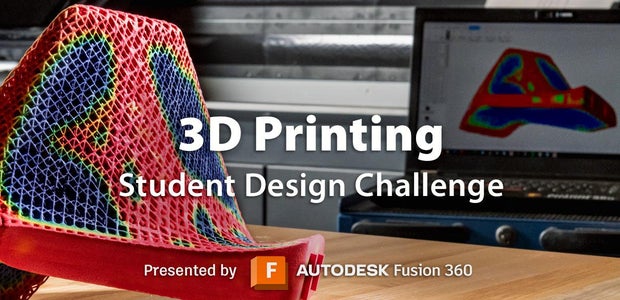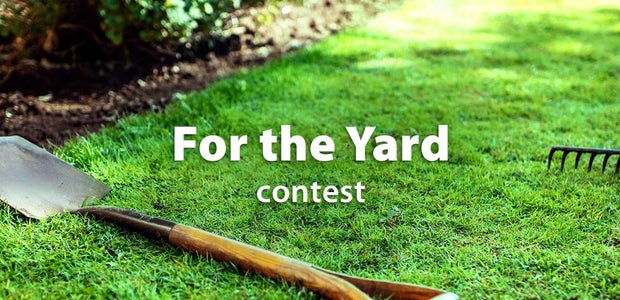Introduction: Octopus Coat Rack - Carved From Walnut
Now here's something different for the home!
A coat rack in the shape of an Octopus, happy to take your coat and hat after a long day.
Made out of reclaimed Walnut worktop this is a statement piece that costs next to nothing to build. So impress your friends and family with this cool feature to your home!
Step 1: The Wood
For this project you will need a piece of solid worktop. Now I was lucky enough to have been gifted this lovely piece of Walnut worktop from a neighbour but you could also use Oak or Beech. Just make sure it is solid worktop and not the veneered sort with chipboard underneath.
You could also use solid wood if you wanted to and are lucky enough to have large pieces of Walnut knocking around that are nearly 1 1/2" thick. Just bare in mind though you won't get the laminations coming through on the completed piece
Step 2: Tools You Will Need
This project mostly requires tools that most people have knocking around in their workshop or garage but there are a couple I used that helped with the process but other tools could be used instead, which I've suggested in brackets.
Tools
Bandsaw (or Jigsaw)
Carving gouge (ideally a shallow sweep - I think I mostly used a 1/2" one for most of the work)
Carving Mallet (or a standard wooden one)
F Clamp - The larger the better for holding your work (Or a G Clamp)
Power Drill
Screwdriver / Impact Driver
Angle Grinder with Sanding Disc (I used a 60, 80 and 120 grit disc throughout the process)
Fordom Rotary tool / Dremel with a Saburr carbide bit (this could also be done with needle rasps)
PVA Glue
Linseed Oil and a Brush (Ideally a small one for getting into the knooks and crannys)
Screws
Forstner Bit (25mm I beleive I used in order to fit the plastic keyhole to the back for hanging)
Plastic Keyhole hanger
Step 3: Transfering the Design to the Wood
Now I'm not one for drawing things to scale from a sketch and transferring them over to the wood, but a lot of you are so do what you feel comfortable with.
What I did was took the wood I had and drew Tentacles that used as much of the wood up as possible. I then drew the head to match. I used a permanent marker for this so I could see the lines clearly when cutting with my bandsaw.
Remember to keep the end of the Tentacles that join the head/body straight so it'll be easier to assemble.
Step 4: Positioning Your Tentacles
Now here comes the fun part. Have a play around with the position of your Tentacles. I wanted mine to look like the Octopus was trying to burst through the wall. I ended up adding two half Tentacles to do this in the end but you may want yours differently.
If you want yours to be a coat rack then you will need to bare in mind how your going to hang your garments onto your piece.
Once you are happy with your pose, take a photo so you can refer to it. I then labelled each Tentacle along with an arrow of which direction it should face upwards.
Step 5: The Head / Body
Now you have a good idea of how your Tentacles are going to be you can now cut out the head. I used the largest piece I had to hand and then drew a rough outline of the head. Remember to keep the bottom flat as this is where your Tentacles will sit.
This was then cut out with my Bandsaw.
The two lines you can see on the head that are left are to mark out where the outer Tentacles will sit. This is important as you want to keep this area as flat as possible and not carve it when the time comes to carve the head.
Step 6: Carving the Tentacles
Now we can carve each Tentacle. I used a angle grinder for speed here with a aggressive sanding disc on it to remove the waste quickly. You want to keep the Tentacles round and consistent until you reach the tips. Here you reduce the to a dull point.
If your Tentacles splay outwards slightly then now is the time to grind an angle to the flat parts at the end where they are due to meet the body. This can be tricky to do at first and is a case of trial and error
Step 7: Fitting the Tentacles
Now for the tricky part. Using the pen marks on the Head/ Body you want to drill a hole from the back of the head/body into each Tentacle. I used a 4mm bit and then using 60mm screws then screwed each Tentacle in place. I added a bit of glue between the joints for good measure.
Step 8: Carving the Head / Body
Using an F Clamp to hold down the body flat and with the Tentacles up in the air, now is the time to carve the head and body. I marked two lines for where I wanted definition in the face and using a mallet and chisel, carved away at the wood at these points.
I then took my angle grinder with a sanding disc mounted to it and rounded over the edges of the head.
Step 9: Oiling
You should now have something that resembles an octopus. All we need to do now is to treat the wood with a couple of coats of linseed oil (Mine is handily kept in a old bottle of Kraken rum, which originally provided me with the inspiration for the project) . I used a 1/2" brush to apply this so I got into all the little crevices between the Tentacles
Step 10: Fitting the Keyholes
Now using a 25mm Forsner bit I drilled two bores (make sure they don't go all the way through!) and then using a wooden mallet fitted the two plastic keyholes into the wood.
Step 11: The Finished Octopus
You Octopus is now ready to hang and hold your coat and hat after a long day

Second Prize in the
Sculpt & Carve Challenge














2 Comments
2 years ago
Love it!
2 years ago
It’s gorgeous!